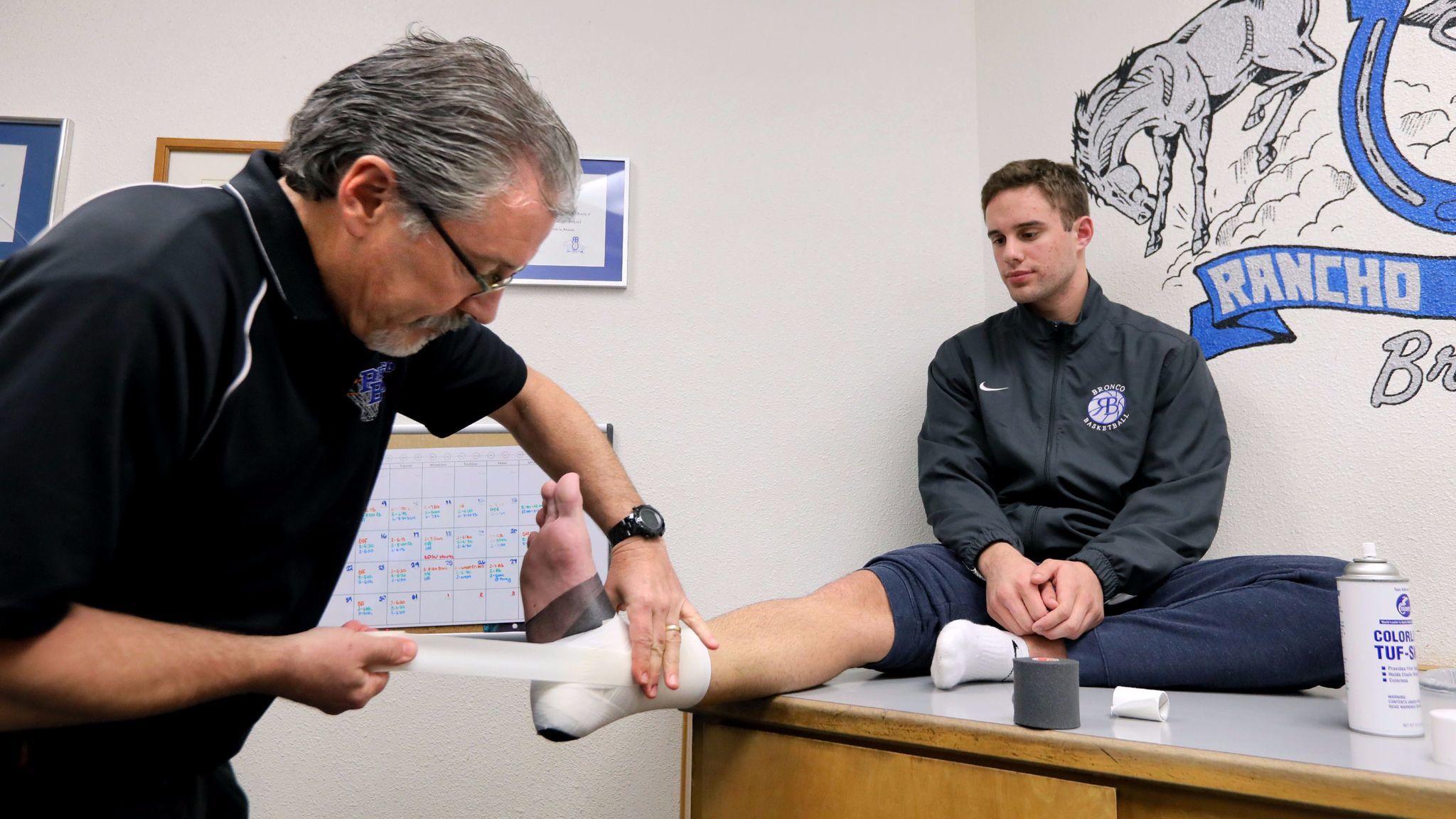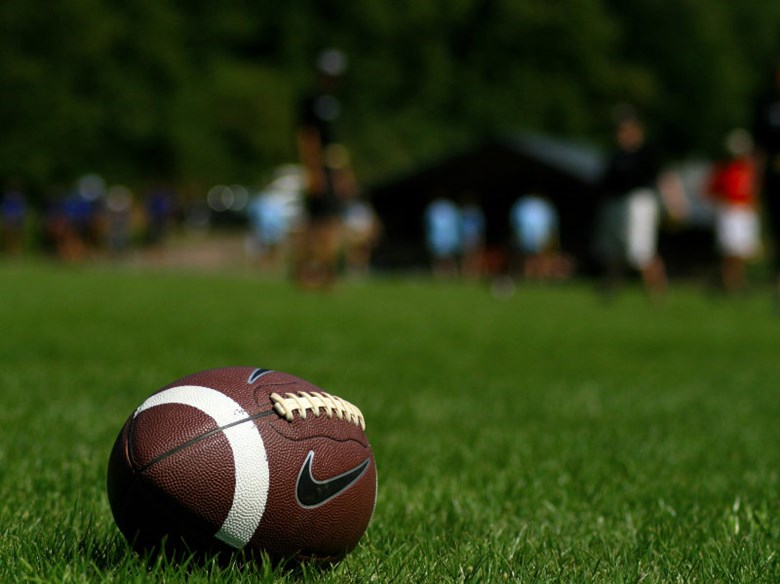
Article reposted from The Press Democrat
Author: LORI A. CARTER
A football player bangs helmets with another during a high school game. One gets up slowly, a little stunned.
Off the field, someone asks him how he is. “I’m fine, just got my bell rung. I can go back in,” he says. He didn’t lose consciousness and doesn’t have a headache. He knows where he is and can see straight.
Should he go back in?
Who determines that, particularly in California, wields a huge influence on that athlete’s future — possibly even his life.
A certified athletic trainer would likely pull him and send him through a weeklong concussion protocol with a step-by-step return-to-play checklist that monitors his symptoms.
But California doesn’t require its athletic trainers to be licensed, which allows just about anyone on the sideline to make that determination.
“Someone could just say they’re an athletic trainer and work and function as an athletic trainer, and there’s no real law against it. That’s dangerous,” said Monica Ohkubo, the head athletic trainer and director of the athletic training program at Santa Rosa Junior College.
California is the only state in the nation that does not require licensure or regulation of such medical professionals, entrusted with the care of hundreds of thousands of high school, college and professional athletes who play in the state every day.
Newly introduced legislation aims to change that.
Assembly Bill 1510, introduced last month by Assemblyman Matt Dababneh (D-Encino), would require licensure and regulation of athletic trainers by an existing occupational therapy oversight board and impose disciplinary action for those who work without proper licensing.
It would also create a scope of practice, codifying what athletic trainers can and can’t do in a medical setting.
Santa Rosa’s Ohkubo and others hail the effort to get California on the same page as other states — both for athletes’ safety and to ensure legal protection for athletic trainers and their employers.
According to the California Athletic Trainers’ Association, which is sponsoring the bill, many school districts do not require any athletic training education or certification, and about 30 percent of those calling themselves athletic trainers in high schools are unqualified for the role.
That poses a significant hidden risk to those seeking medical treatment, the CATA argues. Unqualified employees acting as athletic trainers in high schools run the gamut from coaches and teachers to administrative personnel and other staff.
The legislation has support from the NCAA, American Medical Society for Sports Medicine, American Orthopaedic Society for Sports Medicine, the National Federation of State High School Associations and more than two dozen other related organizations.
No one has registered any opposition to the bill, although in past versions organizations representing nurses, physical therapists, occupational therapists and teachers have challenged the idea. Their concerns focus on the existence of already qualified practitioners and the proposed scope of practice, which they viewed as too broad, which might overlap with their professions.
Many athletic trainers in California have passed state or national certification exams, but those backing the bill argue that’s not enough.
“Anyone can say they are an athletic trainer by saying they are. It’s that simple,” said Tom Abdenour, former head athletic trainer for the Golden State Warriors and San Diego State University.
Parents and athletes have no way to know whether a school’s athletic trainer is qualified, other than questioning their credentials or work history.
“Also, in California, because we have no way to monitor or filter out unqualified people from other states, there may be people didn’t finish their schooling or didn’t pass the certification exam who are passing themselves off as athletic trainers,” he said. “We’re putting the public at risk because we have no way to filter them.”
Someone whose license was revoked in another state could also work in California.
Ohkubo gives other examples that might not be quite as obvious as the head-injury question:
A soccer player injures the anterior cruciate ligament in her knee. She can still play and move with some pain, but it’s not debilitating.
“Now the knee is unstable and they go back in and blow the whole knee out, lose total function,” she said.
Or an untrained trainer “could apply a tape job that makes an injury worse or makes it feel like nothing’s wrong, and the athlete further injures it. The list could go on. Coaches should be able to rely on them. And they can’t,” she said. “It’s a huge health and safety liability and these school districts just don’t know.”
As the danger of concussions has become more recognized, schools and professional teams have placed greater emphasis on prevention and treatment of serious injuries.
At Santa Rosa City Schools, its district athletic director, Russ Peterich, has worked with local physicians Ty Affleck and Robert Nied in a concussion management group, whose members are pushing for athletic trainers at every high school in the state.
But more subtle injuries can be tricky as well, Ohkubo said. Athletic trainers handle issues as far-ranging as skin infections, improper equipment use, lightning and storm safety protocols, asthma attacks, eating disorders, psychological and mental health problems, sprains, breaks, sunburns and more.
But with no state-sanctioned scope of responsibility, there is a legal gray area for trainers, particularly for those who travel with their teams to states that require licenses.
“An increasing number of states, including Utah, Texas, Hawaii and Massachusetts, have made it illegal for an unregulated athletic trainer to travel to their state and work with their teams,” Abdenour said.
As a result, athletic trainers who treat their athletes in those states, as well as their employers, expose themselves to legal and financial consequences.
A legal framework would help protect everyone involved, said Mike Chisar, chair of the CATA’s governmental affairs committee and director of the sports medicine-athletic training program at Diablo Valley College.
“Institutions and employers are concerned,” he said. “They’ve been coming to us more recently, asking, ‘Would you begin licensing? We don’t have any guidelines about how you can work in our facilities. Everyone else has guidelines of what they can and can’t do.’ It puts them on edge.”
A young lacrosse player in San Diego was in a collision and went down.
“The athletic trainer got to him. He recognized signs of a spinal injury and immediately went to work. Would the coaches have called 911? Maybe. But the athletic trainer kicked into high gear and made sure everything was done correctly,” he said.
“One wrong move could have been the difference between a paraplegic situation or not. But if we have someone who is making the decisions out of haste or doesn’t recognize some of the subtleties of the situation, it could be a problem.”
The bill is scheduled to be heard in a state Assembly committee meeting on March 21.
You can reach staff writer Lori A. Carter at 707-521-5470 or lori.carter@pressdemocrat.com. On Twitter @loriacarter.

